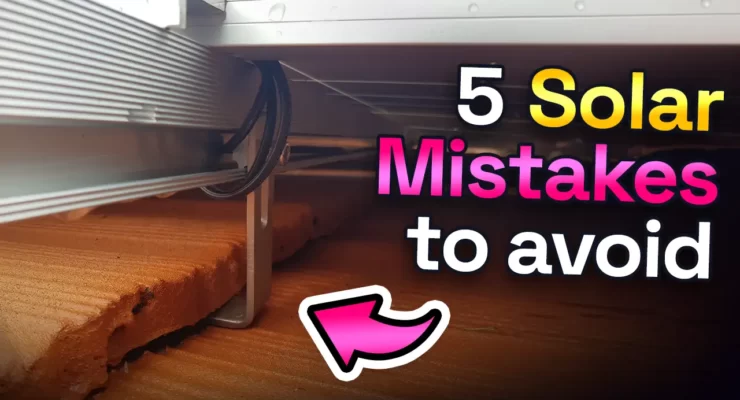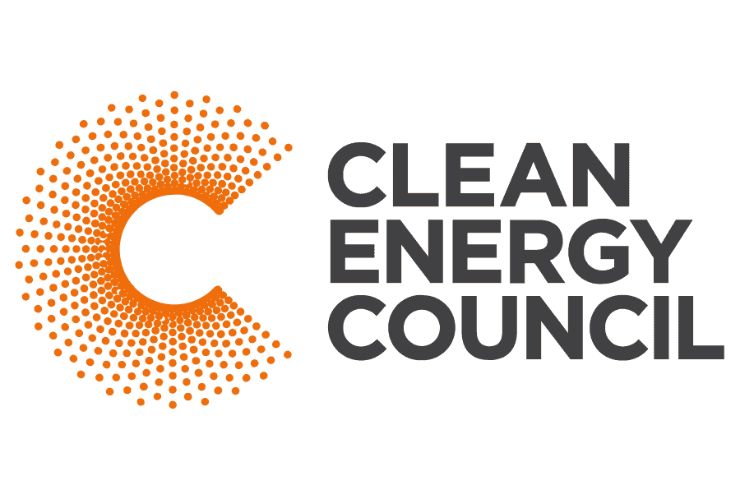
Fast read
Considering solar power for your home? Don't be intimidated by the quotes! Getting multiple quotes (ideally at least 3) is crucial. But remember, the lowest price shouldn't be the only factor.
Look beyond the sticker shock and ask the installers about key metrics. These include how much your energy bill is expected to decrease, the system's return on investment (ROI), and how much energy the panels are projected to produce annually.
To size your system perfectly, analyse your electricity bills. Look for kilowatt-hour (kWh) usage breakdowns over the past year to account for seasonal variations. Consider potential future needs, such as adding electric vehicles or appliances.
Here are 5 common solar mistakes to avoid
Solar panels are a fantastic way to save money on electricity bills and reduce environmental impact. However, just like any home improvement project, there are potential pitfalls to avoid. A solar installation is only as good as its weakest link. Solar mistakes can be expensive, frustrating, and dangerous.
This article will help you avoid the five most common solar mistakes when installing solar panels. It will ensure that your switch to clean energy goes smoothly and successfully.
Solar Mistake #1: Not taking advantage of incentives
Australia’s commitment to renewable energy is evident in its generous solar power incentives. Government programs can lower the cost of installing solar panels, making clean energy more attractive. Let’s explore some of the key incentives you might be eligible for:
- Small-scale Renewable Energy Scheme (SRES): This national program issues tradable certificates called Small-scale Technology Certificates (STCs) for eligible solar power systems. The number of STCs you receive depends on your system’s size and location.
- Solar Rebates: Several state and territory governments offer additional financial rebates for solar panel installations. These rebates can vary depending on your location and the size of your system. For instance, the Victorian Solar Homes Program offers up to $1,400 rebates for eligible homeowners and landlords. Be sure to research the specific rebate programs available in your state.
- Feed-in Tariffs: Many electricity retailers offer feed-in tariffs, which means they will compensate you for any excess solar energy your system generates that gets fed back into the grid. This can help you offset your remaining power bill and earn a credit.
- Tax Exemptions and Concessions: In some cases, you may be eligible for tax exemptions or concessions when purchasing and installing your solar system. This can further reduce the overall cost of going solar. Consult a registered tax agent to determine your eligibility for applicable tax benefits.
Finding the Right Incentives for You:
- The specific incentives you’ll qualify for depend on several factors, including your location, system size, and property type.
Low-quality solar panels
While the allure of a lower price tag might be tempting, opting for cheap solar panels can be a false economy in the long run. Let’s delve deeper into why prioritising quality over upfront cost is crucial for a successful solar investment:

Solar Mistake #2: The Hidden Costs of Cheap Panels:
- Lower Efficiency: High-quality solar panels convert sunlight into electricity more efficiently. This means you’ll generate more power per square meter of panel, maximising energy production. Cheap panels often have lower efficiency ratings, requiring installing more panels to achieve the same power output level. This translates to a larger roof footprint, potentially additional installation costs, and less power generation for your investment.
- Shorter Lifespan: Cheaply made panels may degrade faster, experiencing a significant drop in power output within a shorter timeframe. This means you’ll need to replace your system sooner, incurring additional costs and disrupting energy production.
- Higher Maintenance Needs: Low-quality panels might be more susceptible to defects and require frequent maintenance. This can involve additional expenses for troubleshooting and repairs, further eroding your initial cost savings on solar power.
The Long-Term Value Proposition of Quality Panels:
- Higher Power Output: Efficient, high-quality panels generate more power from the same amount of sunlight. This translates to greater energy savings on electricity bills and a potentially faster return on investment (ROI).
- Durability and Reliability: Reputable brands offer robust panels built to withstand harsh weather conditions. These panels will continue to generate clean energy for decades, minimising the need for replacements and downtime.
Solar Mistake #3: Not getting various quotes
Multiple quotes are paramount to securing the best value for your solar installation. Here’s a breakdown of why shopping around is crucial and how to approach the process effectively:
The Pitfalls of a Single Quote:
- Limited Options: Relying on a single quote restricts your ability to compare features, pricing structures, and overall value propositions from different installers. You might miss out on a more efficient system or a better warranty at a competitive price.
- Potential for Inflated Costs: Without a benchmark, assessing if an initial quote is fair and competitive is complex. Multiple quotes allow you to identify outliers and negotiate a more reasonable price based on the prevailing market rates.
- Lack of Choice in Installation Expertise: Different installers have varying experience levels, certifications, and customer service philosophies.
Maximising Value Through Multiple Quotes:
- Aim for at Least Three Quotes: A good starting point is to obtain quotes from at least three different solar installers.
- Go Beyond Price: While price is important, a comprehensive quote should detail all aspects of the installation, including:
- System size and equipment specifications: Ensure the proposed system capacity meets your energy needs.
- Breakdown of costs: Understand the cost of panels, inverter, labour, permits, and additional fees.
- Warranty details: Compare the warranty coverage offered by each installer for both the equipment and workmanship.
- Financing options: Explore any financing options the installer offers, such as loans or solar power purchase agreements (PPAs).
- Evaluate the Installer: Beyond the quote itself, take some time to research the reputation and experience of each installer. Look for online reviews, check their certifications, and ask for references from past customers. A reputable installer will be transparent, professional, and committed to providing excellent customer service.

Solar Mistake #4: Ignoring stats
Saving money is important when choosing solar, but don’t only consider cost when deciding on your solar installation. Many solar installers understand this and might present quotes heavily focused on upfront costs to close the deal.
The Importance of Looking Beyond Cost:
- Estimated Bill Reduction: Understanding the projected decrease in electricity bills after installing the solar system is vital. This will help you understand how much money you can make and figure out if your investment is worth it.
- Return on Investment (ROI): It is crucial to know how long it will take for the energy savings generated by the solar system to offset the initial installation cost. A shorter ROI period indicates a faster return on your investment.
- Expected Energy Production: The amount of electricity your solar system generates annually directly impacts your energy savings and overall ROI. This information will help you gauge the system’s effectiveness in meeting your energy needs.
- System Design and Efficiency: The layout and efficiency of your solar panels significantly impact their performance. When designing a solar system, a good installer will consider roof orientation, shading, and panel efficiency. Look for quotes that detail the solar installation proposed panel layout and explain how it will optimise energy production.
Solar Mistake #5: Not knowing your power needs
It’s important to know how much energy you use now to design the right solar system for you. Here’s why understanding your power usage is vital and how to go about analysing it:
The Pitfalls of Misjudging Your Needs:
- Undersized System: If you underestimate your power requirements, your solar system might not generate enough electricity to meet your daily needs. This would leave you reliant on the grid to supplement your power shortfall, diminishing the financial benefits of solar.
- Oversized System: On the other hand, an oversized system would generate more power than you can use. While this might sound good, it translates to wasted energy and unnecessary upfront costs.
Understanding Your Energy Consumption:
Analysing your historical energy usage data is the key to designing the perfect solar system size. Here’s how you can gather this information:
- Review Your Electricity Bills: Your electricity bills provide valuable insights into your past energy consumption. Look for monthly or yearly breakdowns that detail your kilowatt-hour (kWh) usage. If possible, consider data from at least the past year to account for seasonal variations in power needs.
- Identify Peak Usage Periods: Understanding when you use the most electricity is crucial. Do your peak usage times coincide with peak sunlight hours?
- Consider Future Needs: Plan for the future! Will your energy needs increase because of anticipated changes, such as adding electric vehicles or appliances? Factoring in potential future needs ensures your solar system can grow with you.